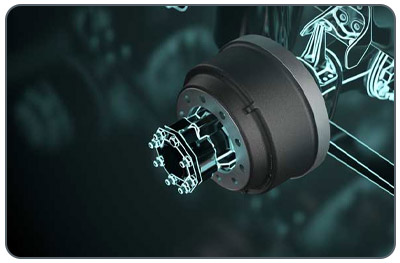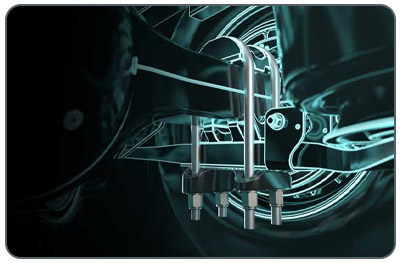
It’s Springtime—and for many in the transportation industry, that means business is starting to kick into high gear. As the days continue to get longer and the weather begins to shift, now is the perfect time to make sure your rig is fully prepped and ready for the busy season ahead. Whether you’re behind the wheel of a heavy-duty hauler or transporting students in a school bus, spring maintenance is crucial for safety, performance, and peace of mind. Here are some key areas to focus on as you get your vehicle road-ready.

1. Tires: The Foundation of a Safe Ride
Tires take a beating through winter’s rough roads, and spring is the ideal time to give them some extra attention. Start with a visual inspection of all tires on your rig. Look for signs of uneven tread wear, sidewall damage, cracks, or punctures. Uneven tread could be a sign of misalignment or suspension issues, which should be addressed immediately. Also, check your tire pressure regularly—warmer temperatures can cause pressure to rise, just as colder weather can cause it to drop. Maintaining proper inflation helps extend tire life and improves fuel efficiency.

2. Brake System: Don’t Compromise on Stopping Power
After enduring winter driving conditions—salt, slush, and moisture—your brakes may need a thorough inspection. Have a qualified technician check the brake pads, discs, and calipers for wear and tear. Be on the lookout for any grinding noises or decreased responsiveness, both signs that your brake system may need servicing. Also, make sure your brake fluid is at the proper level and free of contamination. Leaks or air in the system can significantly reduce braking efficiency, which is the last thing you want when you’re hauling a heavy load.

3. Suspension: Smooth Out the Ride
Your suspension system keeps your ride smooth and your wheels firmly planted on the road. Spring is a great time to inspect components like shocks, struts, and bushings for any signs of damage or wear. Look for fluid leaks around shock absorbers, which can indicate a failing part. Worn suspension can not only make your ride uncomfortable but also affect vehicle control and tire wear.

4. Filters and Fluids: Keep Everything Flowing
Optimal engine performance depends on clean filters and fresh fluids. During your spring inspection, make sure all your filters—oil, air, fuel, and cabin—are clean and in good condition. Dirty filters can reduce fuel economy and cause unnecessary engine strain. Also, top off all essential fluids including engine oil, coolant, transmission fluid, power steering fluid, and windshield washer fluid. If it’s been a while since your last oil change or coolant flush, now is a great time to get those done.

5. Extra Caution for Bus Drivers: Spring Showers and Safety
April showers may bring May flowers, but they also bring slick roads and limited visibility. For bus drivers, especially those transporting students, spring weather calls for extra caution. Start with your windshield wipers—if they’re squeaking or streaking, it’s time for a replacement. Wipers should be checked regularly and replaced at least once or twice a year, depending on usage. Also, check the tire tread depth to ensure it meets safety standards. Bald tires are especially hazardous in wet conditions, where hydroplaning becomes a real risk. Before every trip, check tire pressure—swinging temperatures can throw off your PSI and compromise handling. Lastly, never skip your daily trip checklist. A quick walkaround and a few extra minutes inspecting your vehicle can prevent accidents and costly downtime.
Spring is a time for fresh starts—and that includes making sure your truck or bus is in peak condition. Preventative maintenance not only ensures your safety but also keeps your vehicle running efficiently during the most active months of the year. At Pliler International, we’re here to support you with the parts, service, and expertise you need to keep rolling. Stay safe out there, and let’s make this season a successful one!







